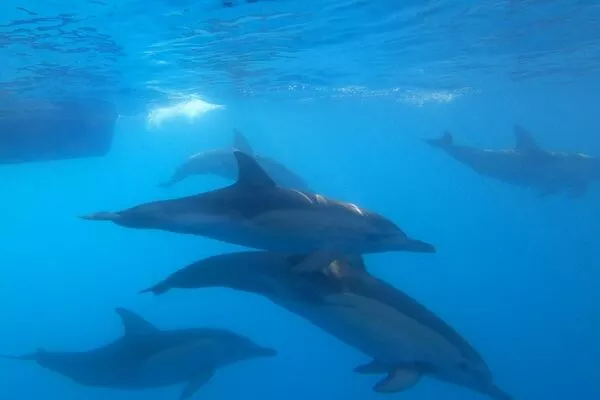Large research on dolphin populations in Australia discovered a need for further conservation and policy measures to sustain adaptive variety and connectedness. The first large-scale survey of the genetic diversity of common dolphin (Delphinus delphis) populations living along 3000 kilometers of Australia’s southern coast has yielded important insights for future conservation efforts.
The extensive Flinders University study recommends for further conservation and policy initiatives to preserve adaptive DNA diversity and facilitate connectivity among various dolphin species. This will aid long-term gene flow and adaptation through continuing habitat changes, including changes in oceanic conditions caused by climate change and human activities.
Flinders University researcher Dr. Andrea Barceló — first author in the study just published in BMC Ecology and Evolution- says high levels of genomic variation can play an important part in the long-term survival of these wide-ranging marine mammals and other species.
Information about how the environment affects DNA diversity of marine populations can assist with the population management and in forecasting how they may cope with climate change and other anthropogenic impacts.
Dr. Barceló.
“Information about how the environment affects DNA diversity of marine populations can assist with the population management and in forecasting how they may cope with climate change and other anthropogenic impacts,” says Dr. Barceló.
Furthermore, Flinders and Macquarie University researchers claim that preserving connectedness can increase long-term genetic variety, which would improve population survival in the face of anthropogenic stressors like as adverse climate occurrences.
“While so many breeding and feeding conditions remain unknown,” says co-author marine biologist Associate Professor Luciana Möller of Flinders University’s College of Science and Engineering, “it’s important for managers of our coastal environments to consider the importance of DNA diversity, particularly in the event of changes in key environmental conditions such as water temperatures, salinity, and food sources.”

The adaptive divergence from more than 200 dolphins showed five dolphin populations from Western Australia to Victoria and compared this with the key environmental conditions and available fish food supplies fuelled by oceanic upwellings and local seasonal circulations.
Genomic variation in dolphins of the southern coast of Western Australia was associated to local currents, while genomic differentiation of common dolphins from sites along the continental shelf break was impacted by fluctuations of primary productivity and sea surface temperatures.
In contrast, genomic divergence of common dolphins from protected coastal habitats and more enclosed embayment locations was mostly associated with salinity and local environment temperature changes. This type of seascape genomic assessment suggested possible genes for future comparative research of common dolphins and maybe other delphinid species that live in comparable dynamic habitats around the world.
The adaptive divergence of more than 200 dolphins examined from Western Australia to Victoria was compared to critical environmental conditions and abundant fish food sources fueled by oceanic upwellings and seasonal circulations.
Dolphin genomic variation off the southern WA coast was linked to local currents, but those from continental shelf break areas were influenced by changes in primary productivity and sea surface temperatures.
In contrast, genetic divergence between pods from protected coastal habitats and more enclosed embayment sites was mostly connected to salinity and local environment temperature changes. The various seascape assessments identified candidate genes for future comparative studies of common dolphins and maybe other delphinid species living in comparable dynamic settings around the world.
















